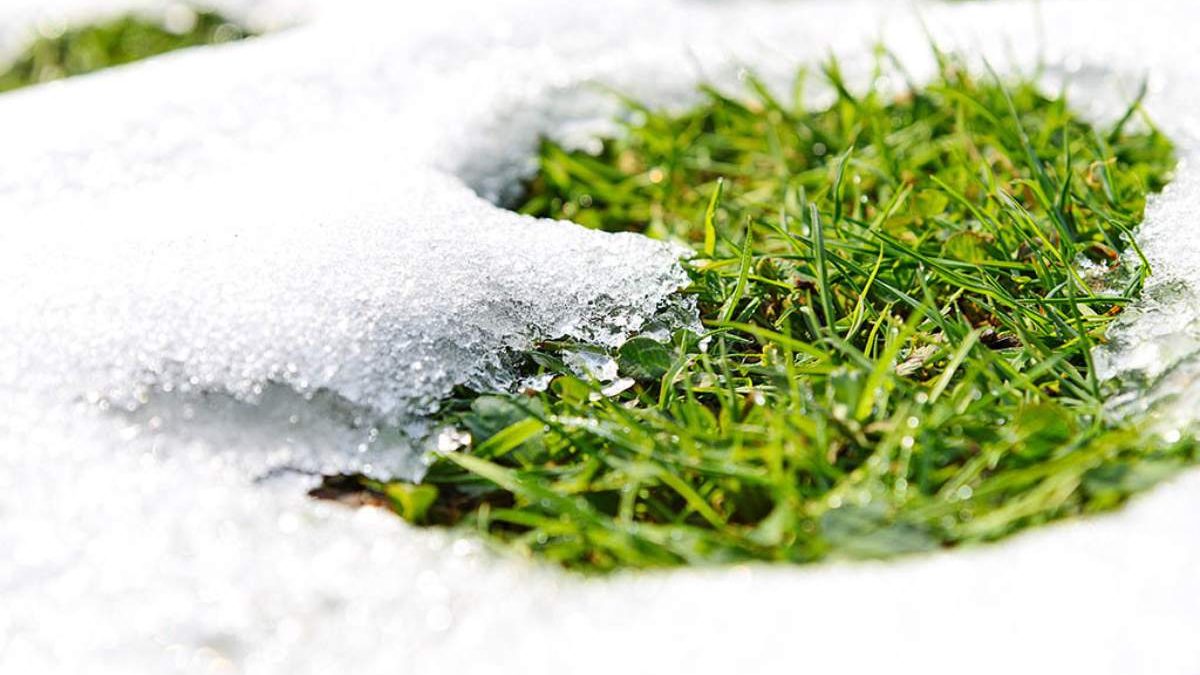While it may seem difficult to keep a green, vivid lawn in the winter, you can overcome the cold odds if you have the appropriate information and techniques. This thorough guide explores the nuances of maintaining healthy, lush grass throughout the coldest months. If you’re one of 50-60% of Americans who experience regular snow, keep reading for winter lawn care ideas, preventive measures, obstacles, and creative indoor options that can help you achieve high end landscaping and design.
Table of Contents
Recognizing Wintertime Lawn Difficulties
Chilling Stress on Grass
The harsh grip of winter can cause stress to your grass, resulting in discoloration and stunted growth. Understanding the physiological consequences of cold weather on your grass is essential to putting stress-reduction plans into action.
Snow Mold Prevention
A widespread fungal scourge in colder climates, snow mold poses a serious risk to the health of your grass. It is essential to comprehend preventive actions and deal with this problem directly if you want to keep your grass healthy and disease-free during the winter.
Tips for Winter Lawn Care
Suitable Types of Winter Grass:
The first step to having a successful winter lawn is choosing grass species that are naturally adapted to colder climates. Explore the subtleties of types such as ryegrass and fescue, which are renowned for their ability to withstand the harshness of winter.
Fall Regular Mowing:
Fall is the first step toward a lawn that is ready for winter. Discover the significance of consistent mowing during this phase of transition to encourage the resilience and vigor of the grass while deterring pests and illnesses.
Sufficient Fertilization:
For your grass to survive the winter cold, it needs the proper nutrients. Examine the nuances of a nutrient-rich, precisely planned winter fertilization strategy and learn which fertilizers work best in cold climates.
Winter Safety Procedures
Insulation by Mulching:
When it comes to winter lawn care, mulching proves to be a formidable friend. Learn about the science of mulching, how it protects the soil from freezing temperatures, and the several materials and methods you may use to protect your grassroots.
Steer clear of heavy foot traffic:
One cannot overstate the effect that foot activity has on winter grass. Reducing traffic on your lawn is essential to avoiding soil compaction, which can be harmful to the condition of your grass. Find strategies to reroute traffic and shield heavily traveled locations from unnecessary strain.
Removal Techniques for Snow:
When the winter paradise hits, it concerns how you handle snow removal. Using the wrong methods might damage your lawn and provide an ideal environment for disease growth. Learn the skill of removing snow properly so that after it melts, beautiful grass appears.
Indoor Swaps for Winter Foliage
Remedies for Indoor Grass:
Bring the greens indoors for the winter. Consider the potential of growing grass in the comfortable comfort of your own home. Find out how to maintain an indoor green oasis, whether using trays or pots.
Winter Greens: Grow Lights:
In the winter, natural light becomes very valuable. Adding grow lights to your indoor grass can be a game-changer. Uncover the secrets of growing lights and their significant influence on preserving vegetation in the gloomy winter months.
Final Thoughts
Maintaining greenery in your surroundings throughout winter becomes a complex endeavor when the cold embraces your surroundings. Now that you know winter lawn problems, proactive winter maintenance advice, safety precautions, and creative interior options, you can turn your lawn into a colorful haven even during the worst winter months. This guide is your all-inclusive companion, making sure that the year-round attractiveness of lush grass never fades.

